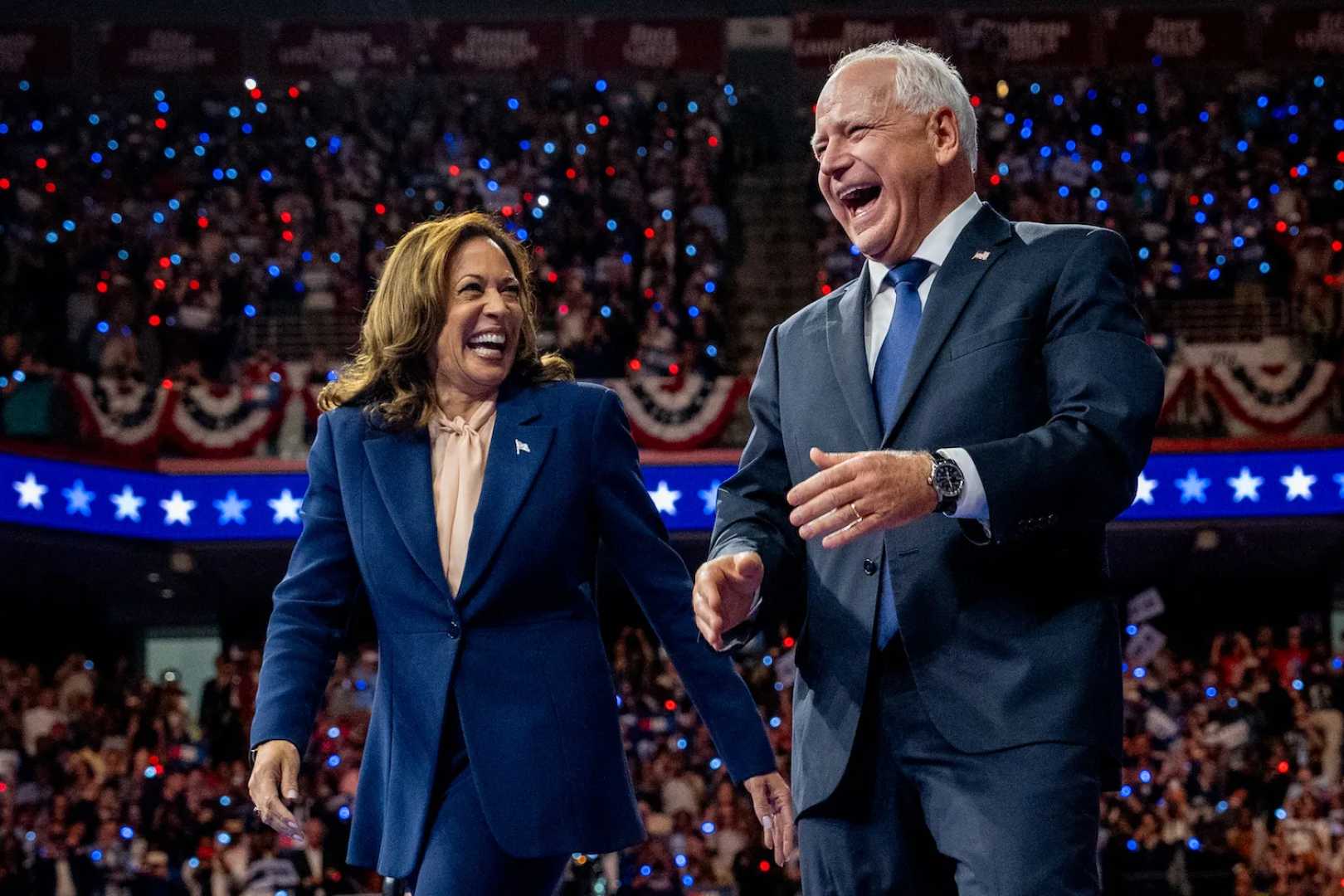Politics
Minnesota’s Political Landscape Shifts as Election Approaches

In the lead-up to the upcoming U.S. Presidential election, the dynamics in Minnesota are attracting national attention, particularly concerning Vice President Kamala Harris‘s choice of Minnesota Governor Tim Walz as her vice-presidential running mate. The strategic selection aimed to strengthen support in the key Midwestern states. However, recent polling indicates a tightening race between Harris and former President Donald Trump, the Republican nominee.
According to FiveThirtyEight’s average of polls, Harris, who initially enjoyed an 8.4 percentage point lead over Trump on August 19, has seen her lead decrease to 5.8 points. This narrowing gap coincides with controversies surrounding Governor Walz, who has faced criticism for remarks about the Electoral College and his past statements regarding the 1989 Tiananmen Square protests.
Despite initial hopes, picking Walz has not significantly bolstered Harris’s support in Minnesota. Polls taken after the announcement of Walz’s nomination as vice-presidential candidate reveal only a modest decrease, with Harris now leading by 5 to 7 points amidst margins of error ranging from 3.5 to 4.9 percent. A SurveyUSA poll conducted in late September placed Harris 6 points ahead of Trump, revealing a marginal shift compared to a similar July survey.
The Minnesota Republican Party has interpreted these shifts as a sign of sagging support for the Harris-Walz ticket. David Hann, the party chairman, indicated in a statement that “Minnesotans are rapidly rejecting the Harris-Walz ticket,” citing a poll showing Harris’s shrinking lead.
Political experts, however, suggest the polling variations may be inconsequential. Paul Goren, a political science professor at the University of Minnesota, remarked that such fluctuations could be “statistical noise” rather than indicative of changing voter sentiment. He further indicated that the nationalization of political issues diminishes the localized impact of running mate selections, noting, “Walz’s selection has not moved the needle in Minnesota.”
Costas Panagopoulos, a political science professor at Northeastern University, backed this view, emphasizing that vice-presidential candidates typically exert limited influence on electoral outcomes, asserting, “Most Minnesota polls consistently show a Harris advantage even if things bounce around somewhat from poll to poll.”
In Minnesota’s rural areas, such as Freeborn County, former President Trump maintains robust support. Local reports indicate a significant number of traditionally Democratic voters shifting their allegiance to Trump. President Trump’s strength in rural areas, where he polls over 60 percent, remains a notable factor in the electoral calculus.
John Anzalone, a veteran pollster and adviser to Harris, emphasized the campaign’s focus on rural outreach, noting that even minor improvements in these areas could cumulatively impact overall results. “If you can do a couple points better in those rural areas, it’s a big deal,” he said.
This evolving landscape underscores the challenges both parties face as they vie for votes in this competitive political environment. As part of the broader national dialogue on party alignment and voter preferences, Minnesota serves as a microcosm of the intricate dynamics at play in the 2024 Presidential election.












